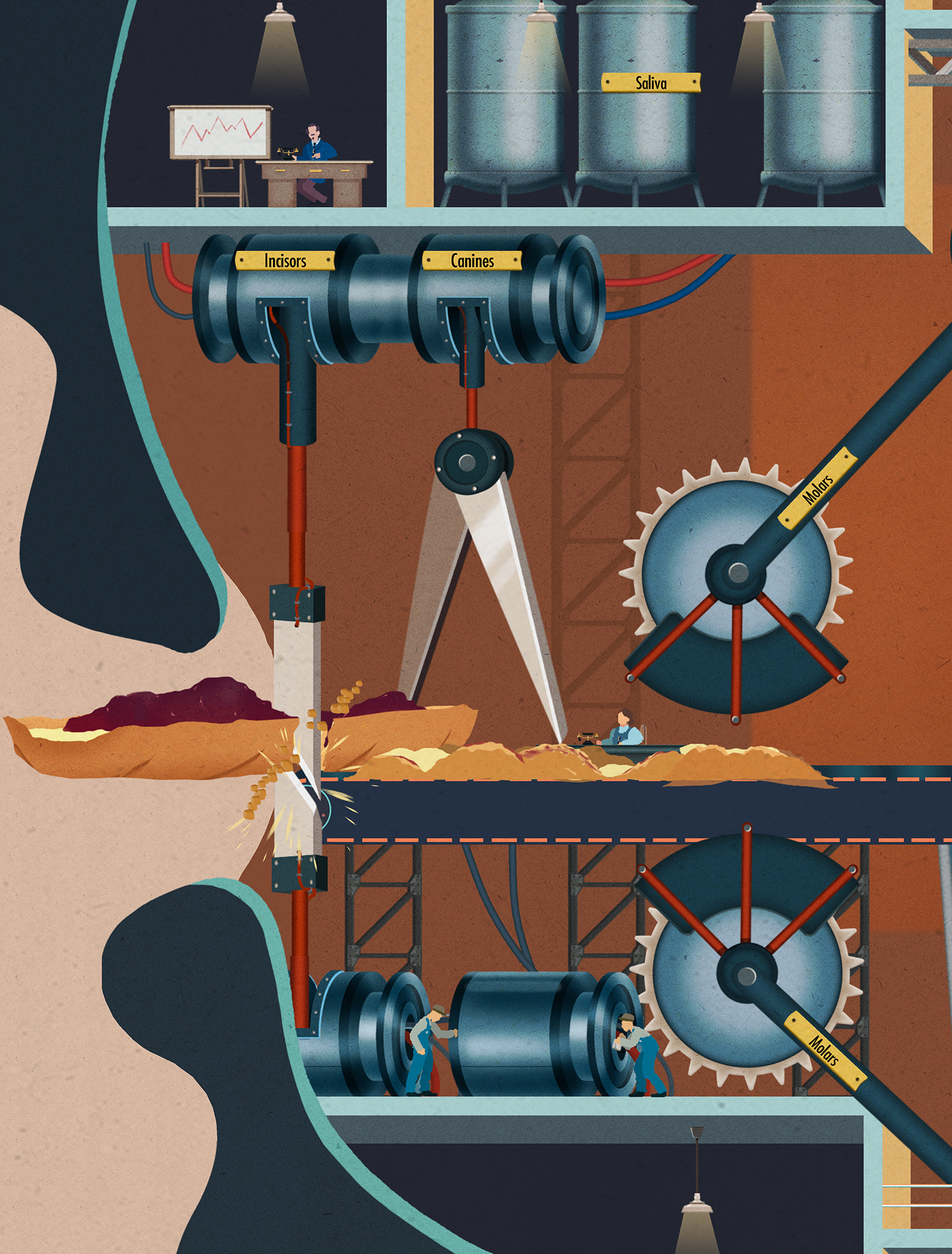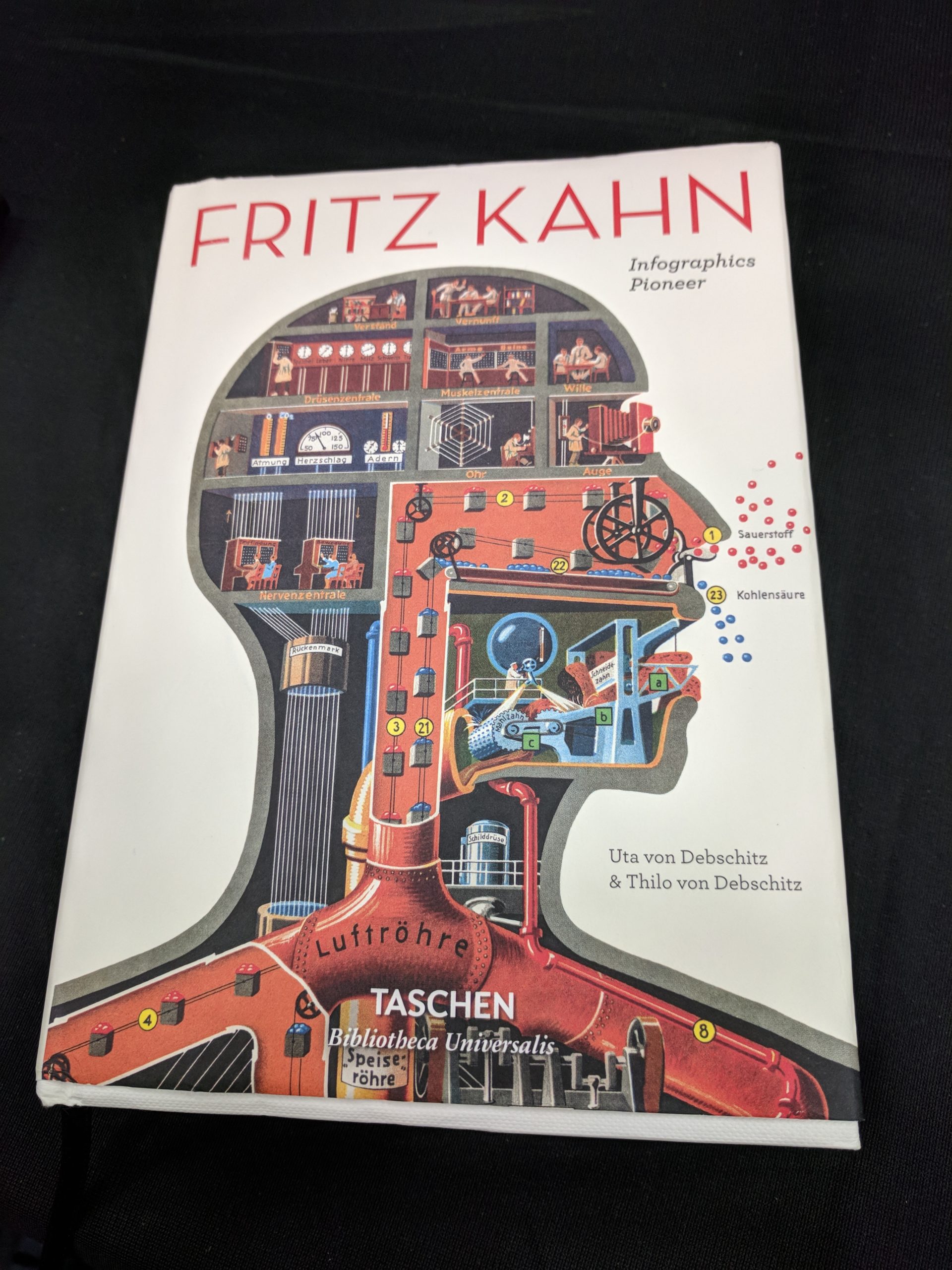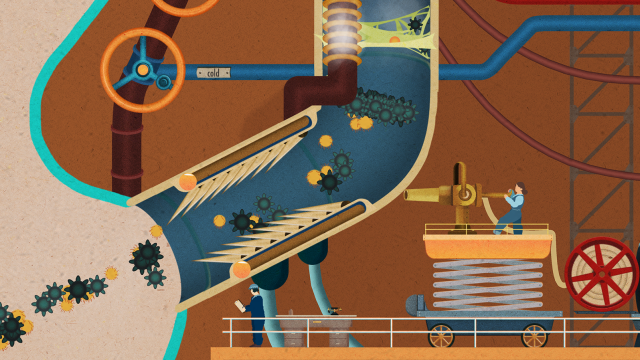Homo Machina is an excellent example of what happens when video game creators look outside pop culture for inspiration: an intricate and beautiful puzzle game that you can appreciate all the more when you learn about the history behind it.
This iPhone and Android game, due out in May, portrays the human body as a factory, with a manager sitting at a desk in the brain. Communication lines running through the limbs and organs to other “departments.” To manipulate it, the player prods and pokes at the body’s intricate machinery and the tiny people who work it. You use pulleys to raise the eyelids and dilate the pupils in order to let in light. You grind food with mechanical molars and analyse tastes, sights and sounds to send back to the brain.
The first chapter, The Mechanics of Waking Up, begins with you chivvying lethargic workers towards their stations before chomping and analysing eggs, coffee, toast and jam. Each scene is a self-contained moving diorama, with levers and dials and contraptions to fiddle with.
Between Homo Machina‘s puzzles, the little people pulling the levers engage in gentle banter and scene-setting. Tired brain operatives shout down pipes to alert the people manning the nose that breakfast is imminent.

Though it’s hardly a medical textbook, the whole game functions as a metaphor for the actual workings of the body. There are no little people living in my olfactory chamber, but there are nerves and receptor cells that capture molecules and tell my brain that the old milk in my fridge should NOT be poured onto cornflakes.
Homo Machina‘s striking aesthetic is inspired by an interesting figure in German cultural history: Fritz Kahn. You will probably have seen one of his startling illustrations at some point in your life (though he didn’t draw them himself; he employed people for that). They are early infographics from the 1920s, combining information and imagination to visualise scientific concepts and the human body in a way that would make sense to a person of any level of education.
Kahn was a Jewish-German scientist, doctor and polymath, and a visionary when it came to scientific communication.
His work on the human body inspired Homo Machina. Fritz Kahn envisioned “der Mensch als Industriepalast,” a difficult-to-translate phrase that’s roughly equivalent to “man as a palace of industry,” the interconnected workings of the organs and senses visualized as manufacturing lines and machinery.
His work reflected the times. This was post-industrial-revolution Germany, during the rise of the motor-car and mass manufacturing, when people worshipped the mechanical.
Like many German-Jewish artists and thinkers of that time, Kahn was driven out of Germany during the ascendancy of the Nazis. He left in 1933, and by the time the Second World War kicked off in 1939, his books had been deemed degenerate by the regime, banned and publicly burned along with hundreds of others. His illustrations were nonetheless used to adorn the work of Nazi-approved writers, which must have been painful to watch. So much of the art that the Nazis deemed undesirable was appropriated, repurposed to horrible ends or destroyed forever.

This makes it especially significant that echoes of Fritz Kahn’s work reverberate through modern art and design (he arguably invented the infographic as we know it). The work is now also successfully homaged in a video game. The Nazi regime tried as hard as anyone in history to kill off art and ideas, but they did not succeed.
Homo Machina continues Kahn’s legacy of making complex science visually explicable. It’s the kind of game that could give both kids and curious adults a basic understanding of how the body works; behind the fun mechanics are medical principles.
I love it when games draw upon art and cultural history to enrich themselves, both visually and thematically. Without the cultural context of Fritz Kahn’s infographics, this would still be a striking, intricate and very interesting puzzle game. Knowing a little about the history behind it only broadens its appeal.

Comments